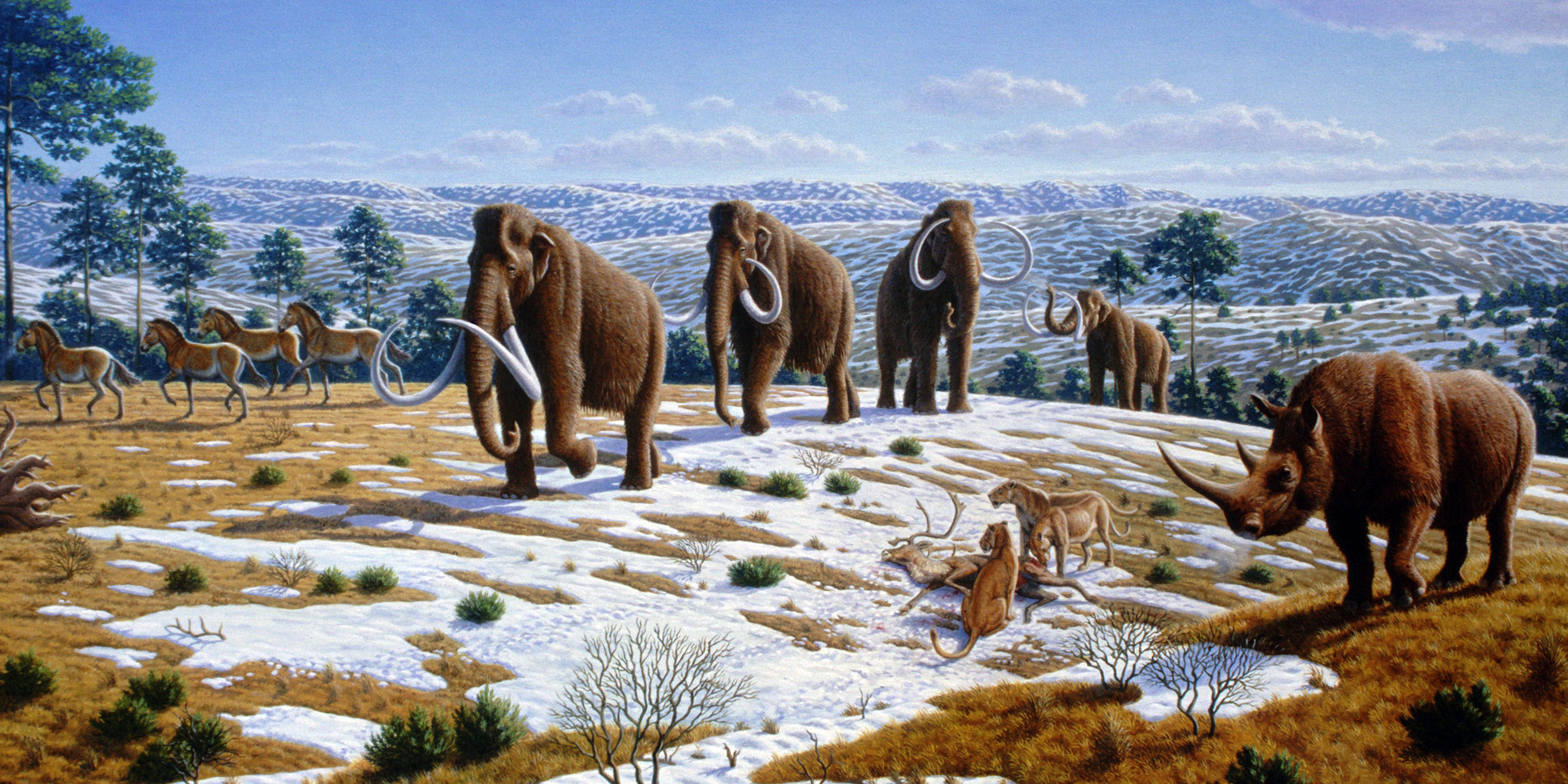Originally published 5 May 1986
In Jean Auel’s blockbuster novel, The Mammoth Hunters, the beautiful Ayla muses on the coming hunt. “How could creatures as small and weak as humans challenge the huge, shaggy, tusked beast, and hope to succeed?” she asks herself.
Her question evokes an image we have often encountered: A little band of half-naked humans, shivering with fear and ice age cold, thrusting pitiful wooden sticks at a great raging woolly mammoth. The odds seem so uneven, the foe so formidable, that our hearts and admiration go out to Ayla and her companions.
But the odds were not so uneven, after all, as Ayla knows. She has in her favor “the intelligence, experience, and cooperation of the other hunters.” And that includes Jondalar and his new spear-throwing device. The mammoth herd goes down without a single human casualty, apart from a bad scare for Ayla.
Science knows a lot about the ice age mammoth. Several well preserved mammoths have been recovered by the Russians from the Siberian permafrost, including a baby mammoth named Dima. The stomach contents of the frozen mammoths tell us about their feeding habits. More is probably known about the biology of mammoths than of any other extinct creature.
There has been much debate among paleontologists about the fate of the mammoths. The creatures were apparently numerous throughout the last ice age, in Europe and Asia and western North America. Then, quite suddenly, the mammoths became extinct about 11,000 years ago, just as the ice age ended.
What wiped out animals?
The mammoths were not the only animal to vanish at the end of the most recent ice age. A simultaneous wave of extinctions swept many large land mammals from the earth. The mastodon, the cave bear, the giant deer, the sabre-toothed “tiger,” the tank-like glyptodont, the North American camel, beavers the size of bears, and the giant ground sloth all vanished. With their demise, the Golden Age of Mammals came to an end.
What was the cause of the extinctions? Some scientists lay the blame on a warming climate that accompanied the retreat of the great continental glaciers. The larger land animals would have been least likely to adapt successfully to the new climatic conditions.
But there are problems with the climate theory of extinction. We know, for example, that the recent ice age is only one of many that have affected the earth over the past few million years. Why did the giant mammals survive previous interglacial periods only to fall victim to the most recent warming?
A considerable amount of circumstantial evidence points to Ayla and her people as the agents of extinction. At several killing sites in the American southwest, finely crafted flint points have been found in conjunction with mammoth bones. Physiologist Jared Diamond reviews some of the newer evidence on mammoth extinction in a [January 1986] issue of Nature. An example: radiocarbon dating has confirmed the simultaneous disappearance from Arizona of the cold-adapted Harrington’s mountain goat and the Shasta ground sloth, a species derived from warm climates. Climatic change would not be expected to adversely affect both species. But the disappearances coincide exactly with the arrival of human hunters in Arizona.
Hunters most likely skilled
Ice age hunters were powerfully armed with flint-tipped spears and devices that amplified the force of the arm when the spear was hurled. They were not the brave naked primitives we have sometimes imagined them to be. They were well adapted to the tundra. They knew how to use fire as a weapon. They were skilled at setting traps. Says Diamond: “A realistic painting of mammoth hunting should show warmly clad professionals calmly spearing a mammoth already crippled by a trap or ambush.”
As difficult as it may be to comprehend, small bands of ice age hunters, ranging over three continents, probably possessed sufficient skills to drive several races of huge beasts into extinction. If this interpretation of the extinctions is correct, it was a slaughter of epic proportions that brought the Golden Age of Mammals to an end.
“Hunting mammoths can be very exciting,” gushes Ayla after her narrow escape. She looks at Jondalar with an aroused gleam in her eye. He returns her glance. The steamier bits of the book are about to ensue. The Golden Age of Humans has begun.



